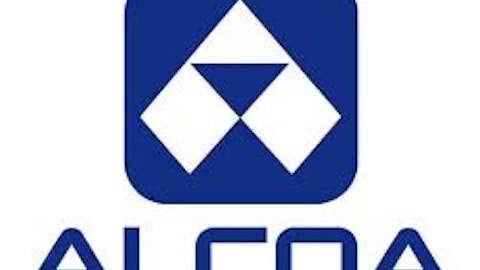Do you remember the good ole’ days? In 1998, gas in my hometown was a whopping $0.98 per gallon. For a kid in high school, that was huge—I was able to afford to go places. Gas had hovered around $1.00 for years, and many of us probably assumed it would stay that way.
Clearly, we were wrong. In 2001, gas crept over $1.50—gasp! But we couldn’t see the future, and had no idea what kind of ride we’d go on.

Source: EIA
It might make sense to assume that because a gallon of gas now costs almost four times as much as it did 15 years ago that we’re spending four times more of our money on it. But that’s not necessarily the best way to view it. By digging into historical trends, we see that the story is more nuanced.
Trending toward less gas usage
One of the key ways to mitigate higher fuel costs is to use less of it. By taking the total amount of gasoline used in the United States, and dividing it by the total number of households, we can see how many gallons of gas the average household uses in a year.

Source: EIA , Census Bureau
Though we showed a steady increase in gas usage between 1994 and 2004, we’ve been trending lower ever since. In fact, the average U.S. household now purchases 11.5% less gasoline than it did in 2004.
This can be broken down into two causes. The first is the simple fact that people are driving less. It’s no surprise that the downtrend in gas purchased correlates closely with the rise in prices. Throw a Great Recession in there, and people have all the motivation in the world to cut back on travel.
But the other factor is technology. As people have demanded more fuel-efficient cars, manufacturers have responded. Ford Motor Company (NYSE:F)’s Focus—introduced in 1998—was one of America’s most fuel-efficient cars, getting over 30 miles per gallon on the highway . Since then, Toyota Motor Corporation (ADR) (NYSE:TM) has undoubtedly led the way, with its introduction of the Prius in 2000—which offered a then-unheard-of 48 miles per gallon . Both companies were able to weather the Great Recession—in part—because they had developed cars that would still be worth buying with the double whammy of expensive gas and a slow economy.
So does that mean increases in gas are somewhat irrelevant due to changes in purchasing behavior?
Not quite.
Back up to get the whole picture
Sure, gas prices go up—but so do salaries. If we want to really wrap our minds around how we’re affected by higher gas prices, it needs to be put in the context of how much we’re earning. The best way to do this is by checking to see how much of the average American family’s income is spent on gasoline every year.
When we look at this metric, it becomes clear that higher gas prices have had a noticeable effect on how we spend our money.

Source: EIA, Census Bureau
Where once we were spending 4% of our income on gasoline, we are now spending 8.3%. Though those numbers might sound small, they actually make a huge difference.
In 2011, the average household income was $50,000. The change between 1994 and now means that the average family is spending $2,150 on gas that it wouldn’t have in the past. That money had to come from somewhere—and it likely represents cutbacks in savings, investments, and discretionary purchases. This not only creates tighter budgets, but it also makes it difficult for some industries—like restaurants, entertainment, and luxury goods—to succeed.
As fellow Fool Dan Caplinger recently pointed out to me, high gas prices also create a situation where our resources may not be allocated for our long-term good. When the short-term reward for finding gas is high, lots of capital is put toward new, smaller companies with the hopes of striking black gold.
Take Pengrowth Energy Corp (USA) (NYSE:PGH) as an example. There’s nothing inherently wrong with the company; it was founded in Canada in 1988 and develops oil and natural gas properties. But it wasn’t until early 2002—when the price of gasoline was rapidly rising—that the company held its IPO, raking in around $148 million .
More recently, Chesapeake Granite Wash Trust (NYSE:CHKR) held its IPO in 2011. The company was able to obtain $436 million by taking itself public, and used that money primarily to repay the costs associated with developing its land in Washita County, Oklahoma . Since going public, the company’s shares—including its outsized dividend—have underperformed the market by over 40 percentage points .
Again, these companies can’t be faulted for taking advantage of a market looking for places to invest in oil. The problem is that investors can sometimes be shortsighted—going after the quick buck—instead of investing with a decades-long time horizon.
All of the money going to projects like this is money that’s not going to other projects—like renewable energy, infrastructure or medical research. On a case-by-case basis it might not seem like a big deal. But taken as a whole, there’s more money being funneled into extracting fossil fuels from our earth than ever before.
The article The Real Costs of High Gasoline Prices, in 3 Charts originally appeared on Fool.com and is written by Brian Stoffel.
Fool contributor Brian Stoffel has no position in any stocks mentioned. The Motley Fool recommends Ford. The Motley Fool owns shares of Ford.
Copyright © 1995 – 2013 The Motley Fool, LLC. All rights reserved. The Motley Fool has a disclosure policy.




